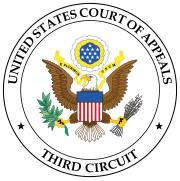Whelan v. Jaslow
| Whelan v. Jaslow | |
|---|---|
 |
|
| Court | United States Court of Appeals for the Third Circuit |
| Full case name | Whelan Assocs., Inc. v. Jaslow Dental Laboratory, Inc. |
| Argued | 3 March 1986 |
| Decided | 4 August 1986 |
| Citation(s) | 797 F.2d 1222; 1240 (3d Cir. 1986); 479 U.S. 1031 (1987); |
| Case opinions | |
| Copyright protection of computer programs may extend beyond the programs' literal code to their structure, sequence and organization | |
| Court membership | |
| Judge(s) sitting | GIBBONS, BECKER, and ROSENN, Circuit Judges |
| Keywords | |
| copyright infringement, non-literal elements, substantial similarity | |
Whelan Assocs., Inc. v. Jaslow Dental Laboratory, Inc. (3rd Cir. 1986) was a landmark case in defining principles that applied to copyright of computer software in the United States, extending beyond literal copying of the text to copying the more abstract structure, sequence and organization. The decision initiated a six-year period (until Computer Associates Int. Inc. v. Altai Inc.) of excessive copyright protection, suppressing innovation.
In 1978 Rand Jaslow tried to build a computer program to handle customer management, billing, accounting, inventory management and other functions for Jaslow Dental Laboratories. He gave up after a few months and hired Strohl Systems to do the job. The software was built by the half-owner of Strohl, Elaine Whelan, and delivered in March 1979. It was written in the EDL language and ran on an IBM Series/1 minicomputer. Strohl kept ownership of the software, which was branded Dentalab, and could license it to other companies in exchange for a 10% commission to Jaslow. In November 1979 Whelan left Strohl and set up her own business, acquiring the right to the software.
Later, Jaslow became engaged in selling the Dentalab software in exchange for a percentage of the gross sales. He formed a company named Dentcom which in late 1982 began to develop a program in a different computer language (BASIC) but with very similar functionality called Dentlab, marketed as a Dentalab successor. The new software could run on IBM Personal Computers, giving access to a broader market. On 30 June 1983 Jaslow's company filed a suit in Pennsylvania state court alleging that Whelan had misappropriated its trade secrets. Whelan filed a countersuit in federal court in Pennsylvania alleging that the Dentlab software violated Whelan's copyrights in the Dentalab software. The district court ruled that Dentlab was substantially similar to Dentalab because its structure and overall organization were substantially similar. Jaslow appealed the decision to the U.S. Third Circuit Court of Appeals.
The district court ruling in the Whelan case drew on the established doctrine that even when the component parts of a work cannot be copyrightable, the structure and organization of a work may be. The court also drew support from the 1985 SAS Inst. Inc. v. S&H Computer Sys. Inc. in which it had been found that copyright protected organizational and structural details, not just specific lines of code.Structure, sequence and organization (SSO) in this case was defined as "the manner in which the program operates, controls and regulates the computer in receiving, assembling, calculating, retaining, correlating, and producing useful information." SSO refers to non-literal elements of computer programs that include "data input formats, file structures, design, organization and flow of the code, screen outputs or user interfaces, and the flow and sequencing of the screens."
...
Wikipedia
